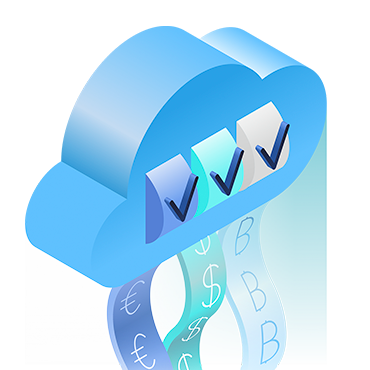Optimizing Cloud Spend with FinOps in DevOps Pipelines
Updated 13 Feb 2024
Organizations are increasingly leaning towards cloud infrastructure to drive their DevOps pipelines. This migration, while beneficial, brings its own set of challenges, notably in managing and optimizing cloud spend. At Ostride Labs, we recognize the critical role of FinOps in navigating this terrain, ensuring that organizations can harness the full potential of the cloud without succumbing to unnecessary expenditures. This article delves into how integrating FinOps into DevOps pipelines can optimize cloud spend, offering a blueprint for organizations aiming to achieve financial efficiency and operational excellence.
The Intersection of DevOps and FinOps
DevOps, a methodology that combines software development (Dev) with IT operations (Ops), aims to shorten the development lifecycle and provide continuous delivery with high software quality. However, as organizations scale their infrastructure to support DevOps, managing cloud costs becomes increasingly complex. This is where FinOps—or Cloud Financial Management—comes into play. FinOps brings financial accountability to the variable spend model of the cloud, enabling organizations to understand expenses and make informed decisions.
Strategies for Optimizing Cloud Spend
In the quest to optimize cloud spend, leveraging data analytics emerges as a cornerstone strategy, intertwining FinOps principles with DevOps methodologies. By harnessing data analytics, organizations can uncover deep insights into their cloud infrastructure, guiding strategic decisions that encompass cost management, compute efficiency, and storage optimization.
Visibility and Accountability: The first step in optimizing cloud spend is gaining visibility into where and how resources are being used. Organizations need to implement tagging practices to track usage and expenses across different departments, projects, and environments. This visibility helps identify underutilized resources, such as compute instances and storage options, that can be downsized or terminated to reduce expenses.
Resource Optimization: Optimizing cloud resources is crucial for managing spend. Techniques such as right-sizing instances to match workload requirements, leveraging reserved instances for predictable workloads, and utilizing spot instances for flexible, non-critical tasks can significantly reduce expenses. Automation tools play a pivotal role in this process, dynamically adjusting resources based on usage patterns.
Budgeting and Forecasting: Effective cost management in the cloud requires setting up budgets and forecasting future spend. FinOps teams should collaborate with DevOps to establish budgetary limits and monitor cloud spend against these benchmarks. Forecasting tools, powered by historical data, can predict future expenses, enabling organizations to plan and adjust their strategies accordingly.
Cost Allocation and Chargeback: Implementing cost allocation and chargeback mechanisms helps in attributing cloud costs to the consuming entities within an organization. This practice encourages accountability and promotes cost-aware culture across teams, as departments become more cognizant of their cloud usage and its financial impact.
Continuous Optimization: Cloud optimization is not a one-time activity but a continuous process. Organizations should regularly review their cloud usage and spend, adjusting their infrastructure and practices as needed. Continuous integration and deployment (CI/CD) pipelines in DevOps can be enhanced with FinOps metrics and checkpoints to ensure ongoing optimization.
Data-Driven Decisions for Infrastructure Efficiency
Data analytics empower organizations to scrutinize their cloud usage patterns meticulously, identifying opportunities to optimize instances and reduce unnecessary expenses. Through comprehensive analysis, FinOps teams can pinpoint inefficiencies in the infrastructure, such as over-provisioned compute resources or underutilized storage, and recommend adjustments to align with actual needs. This optimization not only curtails direct costs but also enhances the overall performance of apps, making them more resilient and responsive to user demands.
Optimizing Compute Resources and Storage
Compute and storage represent significant portions of cloud spend. By analyzing usage data, organizations can adopt practices that ensure these resources are optimally allocated. Techniques such as auto-scaling compute instances based on workload demands and implementing storage lifecycle policies help in aligning resource provision with actual usage, avoiding wastage and reducing expenses. Furthermore, leveraging data for predictive analytics can forecast future needs, enabling proactive adjustments to the infrastructure.
Application Performance and Cost Optimization
In the DevOps arena, app performance is paramount. Data analytics provides a dual advantage—optimizing apps for better performance while managing associated costs. By closely monitoring application data, DevOps teams can identify cost-effective ways to improve efficiency, such as optimizing code for faster execution or choosing the right cloud services that balance performance with cost. This holistic approach ensures that applications run smoothly, meet user expectations, and remain within budgetary constraints.
Collaborative Practices for Cost Optimization
Collaboration between FinOps and DevOps teams is critical in realizing cost optimization goals. By sharing data-driven insights and adopting shared practices, these teams can work together to make informed decisions that benefit the organization. Implementing governance policies that encourage responsible cloud usage and promoting a culture of cost awareness across teams help in maintaining financial control without stifling innovation.
The Role of Technology and Tools
Leveraging technology and tools is indispensable in integrating FinOps into DevOps pipelines. Cloud cost management platforms and FinOps tools provide granular insights into cloud usage and spend, offering recommendations for optimization. These tools can automate many aspects of cloud financial management, from identifying unused resources to implementing governance policies.
Conclusion
Integrating FinOps into DevOps pipelines is essential for organizations looking to optimize their cloud spend. By fostering a culture of financial accountability, utilizing the necessary tools, and adopting best practices for resource optimization, organizations can ensure they are getting the most value out of their cloud infrastructure. As cloud technologies and pricing models evolve, so too should organizations’ approaches to cloud financial management. At Ostride Labs, we believe that by embracing FinOps within DevOps, organizations can not only manage their cloud costs more effectively but also drive greater innovation and business value.
This journey towards optimizing cloud spend with FinOps in DevOps pipelines is ongoing, and organizations that adapt and iterate on their practices will thrive in the dynamic cloud environment. The future is bright for those who leverage the power of FinOps to make informed, strategic decisions about their cloud investments.



